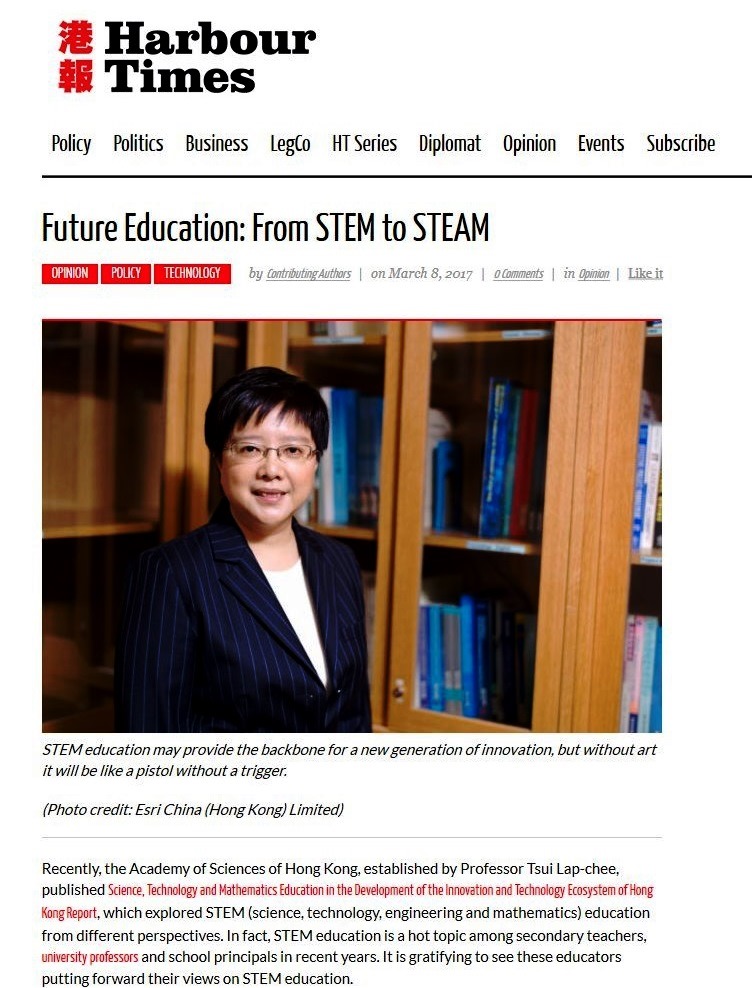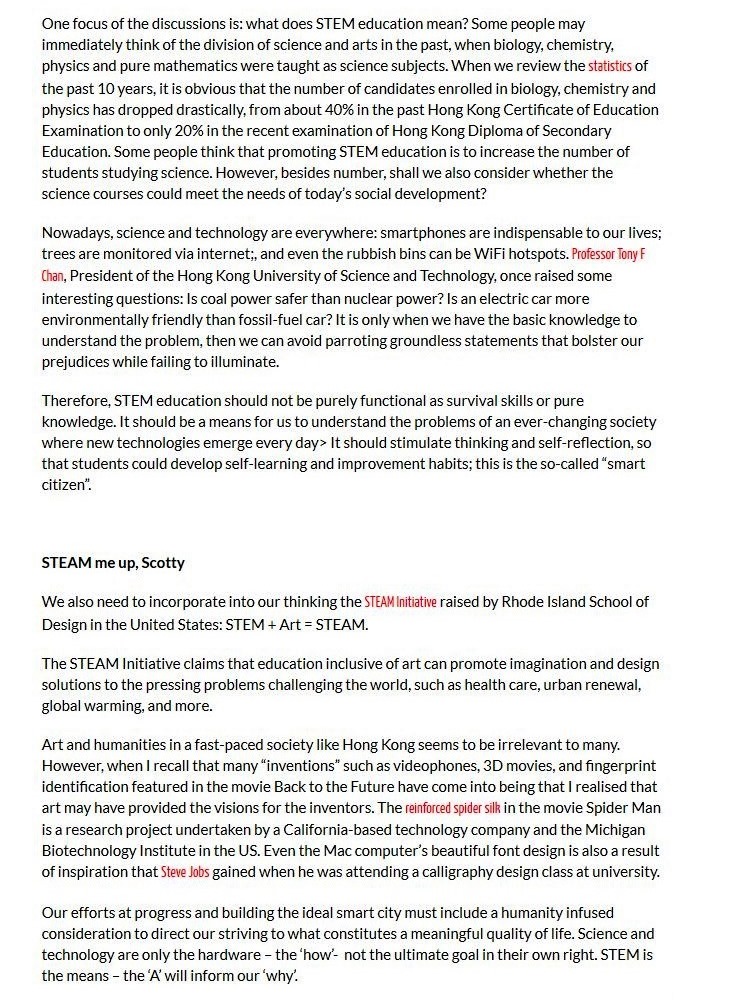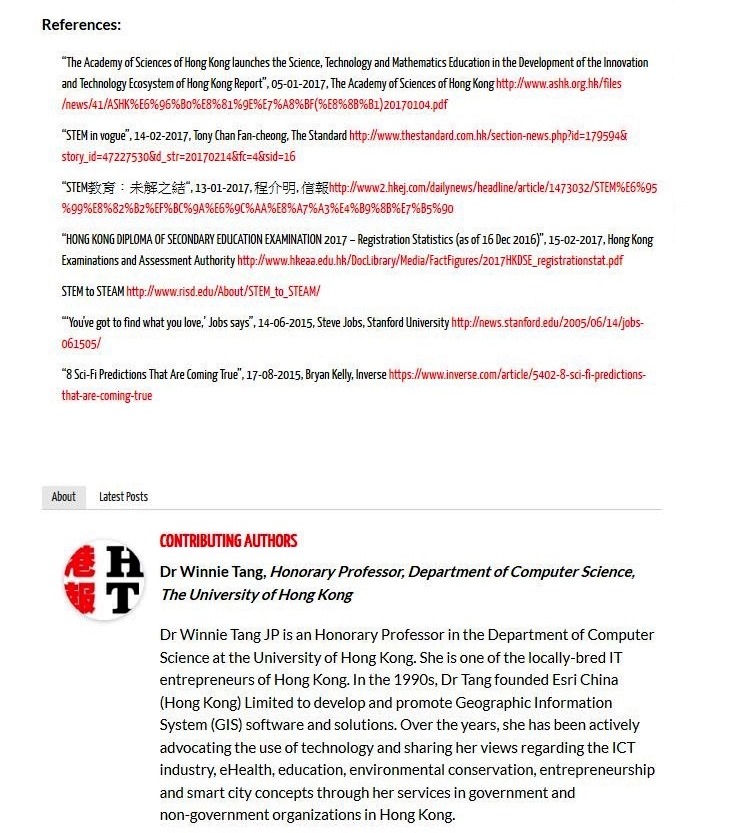網上版請按此



Future Education: From STEM to STEAM
Recently, the Academy of Sciences of Hong Kong, established by Professor Tsui Lap-chee, published Science, Technology and Mathematics Education in the Development of the Innovation and Technology Ecosystem of Hong Kong Report, which explored STEM (science, technology, engineering and mathematics) education from different perspectives. In fact, STEM education is a hot topic among secondary teachers, university professors and school principals in recent years. It is gratifying to see these educators putting forward their views on STEM education.
One focus of the discussions is: what does STEM education mean? Some people may immediately think of the division of science and arts in the past, when biology, chemistry, physics and pure mathematics were taught as science subjects. When we review the statistics of the past 10 years, it is obvious that the number of candidates enrolled in biology, chemistry and physics has dropped drastically, from about 40% in the past Hong Kong Certificate of Education Examination to only 20% in the recent examination of Hong Kong Diploma of Secondary Education. Some people think that promoting STEM education is to increase the number of students studying science. However, besides number, shall we also consider whether the science courses could meet the needs of today's social development?
Nowadays, science and technology are everywhere: smartphones are indispensable to our lives; trees are monitored via internet;, and even the rubbish bins can be WiFi hotspots. Professor Tony F Chan, President of the Hong Kong University of Science and Technology, once raised some interesting questions: Is coal power safer than nuclear power? Is an electric car more environmentally friendly than fossil-fuel car? It is only when we have the basic knowledge to understand the problem, then we can avoid parroting groundless statements that bolster our prejudices while failing to illuminate.
Therefore, STEM education should not be purely functional as survival skills or pure knowledge. It should be a means for us to understand the problems of an ever-changing society where new technologies emerge every day. It should stimulate thinking and self-reflection, so that students could develop self-learning and improvement habits; this is the so-called "smart citizen".
STEAM me up, Scotty
We also need to incorporate into our thinking the STEAM Initiative raised by Rhode Island School of Design in the United States: STEM + Art = STEAM.
The STEAM Initiative claims that education inclusive of art can promote imagination and design solutions to the pressing problems challenging the world, such as health care, urban renewal, global warming, and more.
Art and humanities in a fast-paced society like Hong Kong seems to be irrelevant to many. However, when I recall that many "inventions" such as videophones, 3D movies, and fingerprint identification featured in the movie Back to the Future have come into being that I realised that art may have provided the visions for the inventors. The reinforced spider silk in the movie Spider Man is a research project undertaken by a California-based technology company and the Michigan Biotechnology Institute in the US. Even the Mac computer's beautiful font design is also a result of inspiration that Steve Jobs gained when he was attending a calligraphy design class at university.
Our efforts at progress and building the ideal smart city must include a humanity infused consideration to direct our striving to what constitutes a meaningful quality of life. Science and technology are only the hardware – the 'how'- not the ultimate goal in their own right. STEM is the means – the 'A' will inform our 'why'.
Dr. Winnie Tang
Honorary Professor, Department of Computer Science, The University of Hong Kong